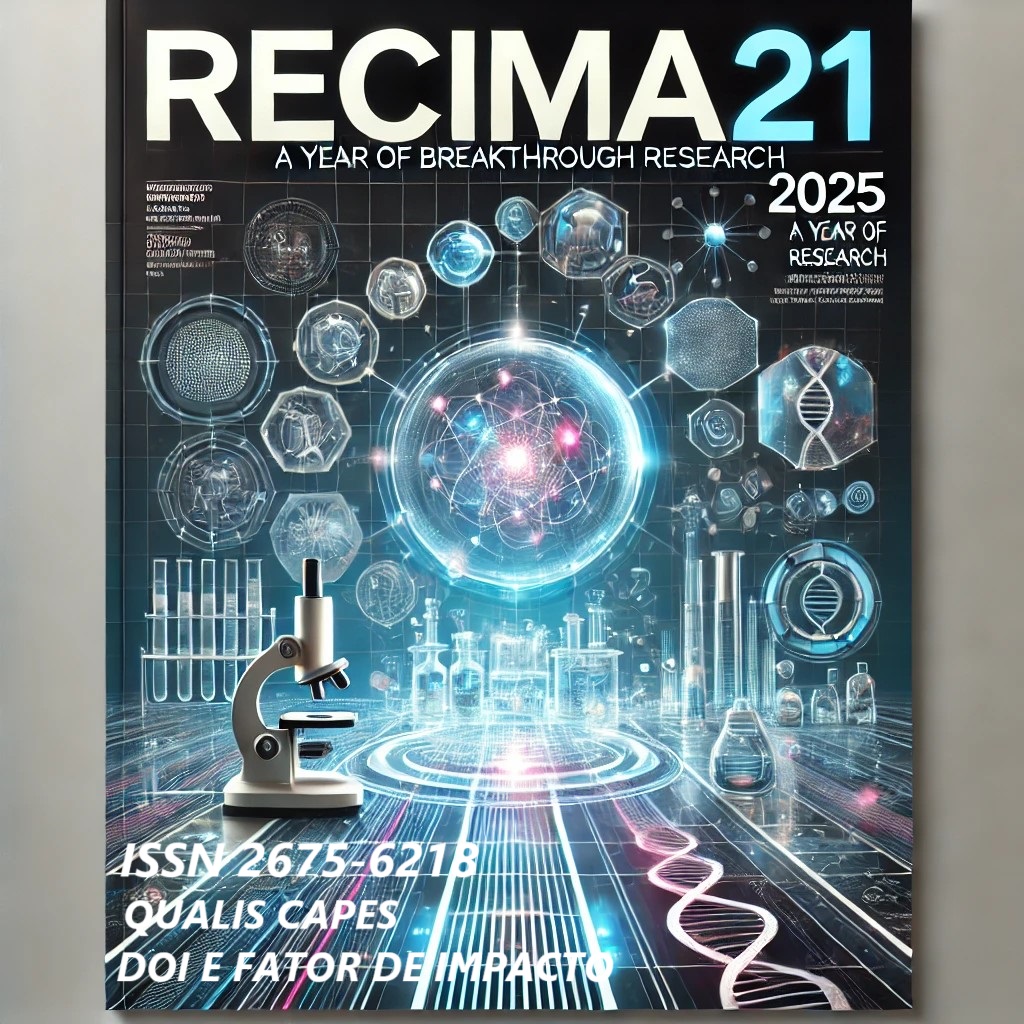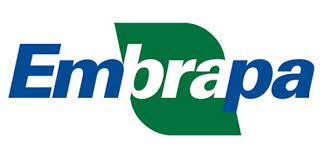IMPLICAÇÕES CUTÂNEAS SOBRE O COLÁGENO TIPO I E III NA MENOPAUSA E O USO FACIAL DE BIOESTIMULADORES DE COLÁGENO INJETÁVEIS PARA AUMENTO DA NEOCOLAGÊNESE
DOI:
https://doi.org/10.47820/recima21.v6i8.6698Palavras-chave:
Menopausa, Colágeno, Prodecimentos Minimamente InvasivosResumo
Atualmente, com o aumento da longevidade feminina, há uma maior preocupação com o envelhecimento saudável e, consequentemente, com os cuidados em relação à saúde da pele. A menopausa é caracterizada por alterações sistêmicas e cutâneas que impactam a estrutura e função dérmica. Dentre essas alterações, destaca-se a redução significativa da síntese de colágeno tipo I e tipo III, principais componentes estruturais da derme, responsáveis por sua firmeza, elasticidade e resistência. O objetivo deste estudo é analisar as implicações da menopausa sobre a integridade do colágeno dérmico facial e avaliar o potencial terapêutico dos bioestimuladores injetáveis de colágeno no estímulo à neocolagênese. A pesquisa foi conduzida por meio de uma revisão integrativa da literatura científica, com seleção de estudos publicados no período de 2020 a 2025, cujas bases de dados foram PubMed, ScienceDirect e LILACS. Os resultados demonstraram que os bioestimuladores de colágeno, como a hidroxiapatita de cálcio, o ácido poli-L-láctico e prolicaprolactona, são capazes de ativar fibroblastos e promover a síntese progressiva de colágeno, contribuindo para a regeneração da matriz extracelular e melhoria da qualidade cutânea em mulheres na menopausa. Portanto, neste estudo, compreendeu-se que a utilização desses agentes compõem uma abordagem eficaz e segura no tratamento da degradação dérmica associada à menopausa, sendo fundamental para o desenvolvimento de protocolos individualizados baseados em evidências clínicas.
Downloads
Referências
1. Instituto Brasileiro de Geografia e Estatística (IBGE). Censo Brasileiro de 2022. Rio de Janeiro: IBGE; 2023.
2. Leal M, Felizola J, Veloso PHS. Os efeitos dérmicos decorrentes do declínio de estrogênio em mulheres pós-menopausa. Rev Iberoam Humanid Ciênc Educ. 2022;8(11):2436-44. DOI: https://doi.org/10.51891/rease.v8i11.7835
3. Ribeiro CT, Cruz MT, Oliveira SI, Gastaldelo V, Trevisan FT, Marini CD. Análise da qualidade de vida da mulher na menopausa e os medicamentos utilizados. Braz J Implant Health Sci. 2024;6(1):1888-902. DOI: https://doi.org/10.36557/2674-8169.2024v6n1p1888-1902
4. The World Health Organization quality of life assessment (WHOQOL): position paper from the World Health Organization. Soc Sci Med. 1995;41(10):1403-9. doi:10.1016/0277-9536(95)00112-K DOI: https://doi.org/10.1016/0277-9536(95)00112-K
5. Bernardo AFC, Santos K, Silva DP. Pele: alterações anatômicas e fisiológicas do nascimento à maturidade. Rev Saúde Foco. 2019:1221-33.
6. Santos YS, MELLO PL. Alterações cutâneas causadas pela menopausa: revisão de literatura. Rev Saúde - UNG-Ser. 2023;16(4):27. DOI: https://doi.org/10.33947/1982-3282-v16n4-4644
7. Ministério da Saúde (BR). Menopausa marca processo de mudanças físicas e mentais. Brasília: Ministério da Saúde; 2023.
8. Reus TL, Brohem CA, Schuck DC, Lorencini M. Revisiting the effects of menopause on the skin: functional changes, clinical studies, in vitro models and therapeutic alternatives. Mech Ageing Dev. 2020;185:111193. doi:10.1016/j.mad.2019.111193 DOI: https://doi.org/10.1016/j.mad.2019.111193
9. Rzepecki AK, Murase JE, Juran R, Fabi SG, Mclellan BN. Estrogen-deficient skin: the role of topical therapy. Int J Womens Dermatol. 2019;5(2):85-90. doi:10.1016/j.ijwd.2018.11.004 DOI: https://doi.org/10.1016/j.ijwd.2019.01.001
10. Papaiordanou F, Oliveira GP, Hexsel D, Vattimo ACA. Colágeno e pele: da estrutura às evidências de sua suplementação oral. Surg Cosmet Dermatol. 2022;14:e20220023. DOI: https://doi.org/10.5935/scd1984-8773.20221400110
11. Lephart ED, Naftolin F. Factors influencing skin aging and the important role of estrogens and selective estrogen receptor modulators (SERMs). Clin Cosmet Investig Dermatol. 2022;15:1695-709. doi:10.2147/CCID.S355812 DOI: https://doi.org/10.2147/CCID.S333663
12. Lephart ED, Naftolin F. Menopause and the skin: old favorites and new innovations in cosmeceuticals for estrogen-deficient skin. Dermatol Ther (Heidelb). 2021;11(1):53-69. doi:10.1007/s13555-020-00479-y DOI: https://doi.org/10.1007/s13555-020-00468-7
13. Camatta CP, Barroso GP. Análise comparativa teórica entre os bioestimuladores de colágeno injetáveis [Internet]. 2022 [citado 2025 Mar 29]. Disponível em: https://repositorio.ifes.edu.br/handle/123456789/2934
14. Borges ARS, Souza FM, Veloso PHS. O uso do ácido poli-L-láctico como bioestimulador de colágeno na região facial: uma revisão sobre o seu uso em peles maduras. Rease. 2022;8(11):2234-43. Disponível em: https://periodicorease.pro.br/rease/article/view/7810 DOI: https://doi.org/10.51891/rease.v8i11.7810
15. Park S, Kang S, Lee WJ. Menopause, ultraviolet exposure, and low water intake potentially interact with the genetic variants related to collagen metabolism involved in skin wrinkle risk in middle-aged women. Int J Environ Res Public Health. 2021;18(4):2044. doi:10.3390/ijerph18042044 DOI: https://doi.org/10.3390/ijerph18042044
16. Nowag B, Casabona G, Kippenberger S, Zöller N, Hengi T. Calcium hydroxylapatite microspheres activate fibroblasts through direct contact to stimulate neocollagenesis. J Cosmet Dermatol. 2023;22(2):426-32. doi:10.1111/jocd.15126 DOI: https://doi.org/10.1111/jocd.15521
17. Massida E. Starting point for protocols on the use of hyperdiluted calcium hydroxylapatite (Radiesse®) for optimizing age-related biostimulation and rejuvenation of face, neck, décolletage and hands: a case series report. Clin Cosmet Investig Dermatol. 2023;16:3427-39. doi:10.2147/CCID.S426493 DOI: https://doi.org/10.2147/CCID.S420068
18. Vitale M, Zappia E, Galadari H, Felice F, Lazzarotto A, Sukmanskaya N, et al. Hybrid fillers: personal experience of premixing calcium hydroxylapatite and hyaluronic acid for natural face reshaping. Clin Cosmet Investig Dermatol. 2025;18:2495-507. doi:10.2147/CCID.S457996 DOI: https://doi.org/10.1097/SCS.0000000000011232
19. Barone M, Salzillo R, Persichetti P. Minimally invasive facial rejuvenation with the hybrid filler HArmonyCa™. Aesthetic Plast Surg. 2024;48:5251-3. doi:10.1007/s00266-024-03498-2 DOI: https://doi.org/10.1007/s00266-023-03649-9
20. Chuang FJ, Wang YW, Chang LR, Lin YC, Lin YT, Li JR, et al. Enhanced skin neocollagenesis through the transdermal delivery of poly-L-lactic acid microparticles by using a needle-free supersonic atomizer. Biomater Adv. 2023;154:213619. doi:10.1016/j.bioadv.2023.213619 DOI: https://doi.org/10.1016/j.bioadv.2023.213619
21. Chen MC, Chang CC, Wu CL, Lin YW, Lin HF, Huang JH, et al. Augmenting dermal collagen synthesis through hyaluronic acid-based microneedle-mediated delivery of poly(L-lactic acid) microspheres. Int J Biol Macromol. 2024;281:136311. doi:10.1016/j.ijbiomac.2024.136311 DOI: https://doi.org/10.1016/j.ijbiomac.2024.136311
22. Angelo-Khattar M. Objective assessment of the long-term volumizing action of a polycaprolactone-based filler. Clin Cosmet Investig Dermatol. 2022;15:2895-901. doi:10.2147/CCID.S373323 DOI: https://doi.org/10.2147/CCID.S385202
23. Hong JY, Kim JH, Kwon TR, Hong JK, Li K, Kim BJ. In vivo evaluation of novel particle-free polycaprolactone fillers for safety, degradation, and neocollagenesis in a rat model. Dermatol Ther. 2021;34(1):e14770. doi:10.1111/dth.14770 DOI: https://doi.org/10.1111/dth.14770
Downloads
Publicado
Licença
Direitos de Autor (c) 2025 RECIMA21 -Revista Científica Multidisciplinar - ISSN 2675-6218

Este trabalho encontra-se publicado com a Licença Internacional Creative Commons Atribuição 4.0.
Os direitos autorais dos artigos/resenhas/TCCs publicados pertecem à revista RECIMA21, e seguem o padrão Creative Commons (CC BY 4.0), permitindo a cópia ou reprodução, desde que cite a fonte e respeite os direitos dos autores e contenham menção aos mesmos nos créditos. Toda e qualquer obra publicada na revista, seu conteúdo é de responsabilidade dos autores, cabendo a RECIMA21 apenas ser o veículo de divulgação, seguindo os padrões nacionais e internacionais de publicação.













